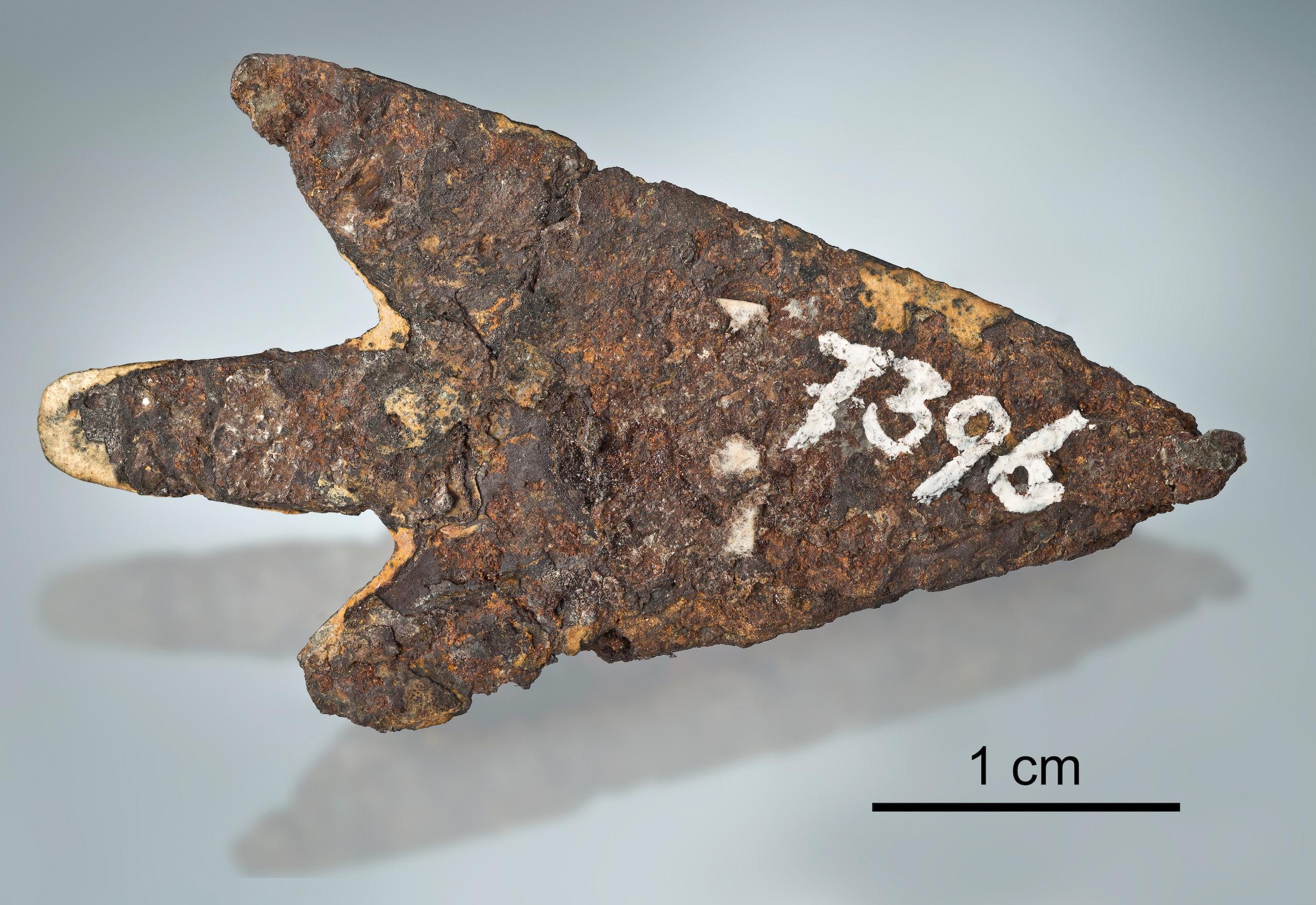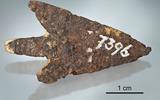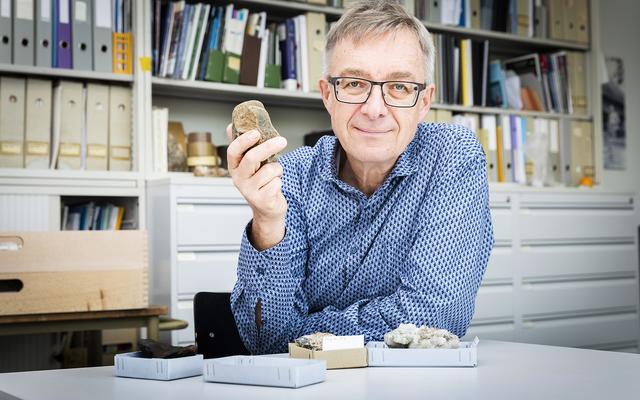In February 2021, a 39 mm long iron arrowhead weighing 2.9 grams has now been identified at the Bernese History Museum. It comes from a Bronze Age pile-dwelling site near Mörigen on Lake Biel (900-800 BC) and was found during excavations in the 19th century. The site is only a few kilometres away from the Twannberg meteorite strewn field. In order not to damage irreplaceable historical artefacts, non-destructive examination methods must be used for the analysis. A detailed examination of the arrowhead confirmed beyond doubt that it was made of meteoritic iron. Archaeological objects made of meteoritic iron are extremely rare, however - only 55 such objects are known from the whole of Eurasia and Africa, and these come from 22 sites.
These analyses clearly show that it is a piece of iron meteorite - but surprisingly not from the nearby Twannberg strewn-field! With about 8.3 % nickel, the content of this element in the arrowhead is almost twice as high as in the Twannberg meteorite. A high content of germanium also shows that it is very likely a type IAB meteorite. Furthermore, it could be shown that the rather low concentration of aluminium-26 indicates that the sample originates from the interior of a meteorite which originally had a mass of at least 2 tons.
The closest finds of archaeological objects made of meteoritic iron in Europe are known from Poland, but this is again clearly a different meteorite. Further analyses in archaeological collections in Europe could provide clues as to whether the trace of the arrowhead from Mörigen to Estonia can be confirmed.
From February 1, 2024 until April 21, 2025, the arrowhead will be on display as part of the special exhibition "And then came bronze!" at the Bernisches Historisches Museum.





